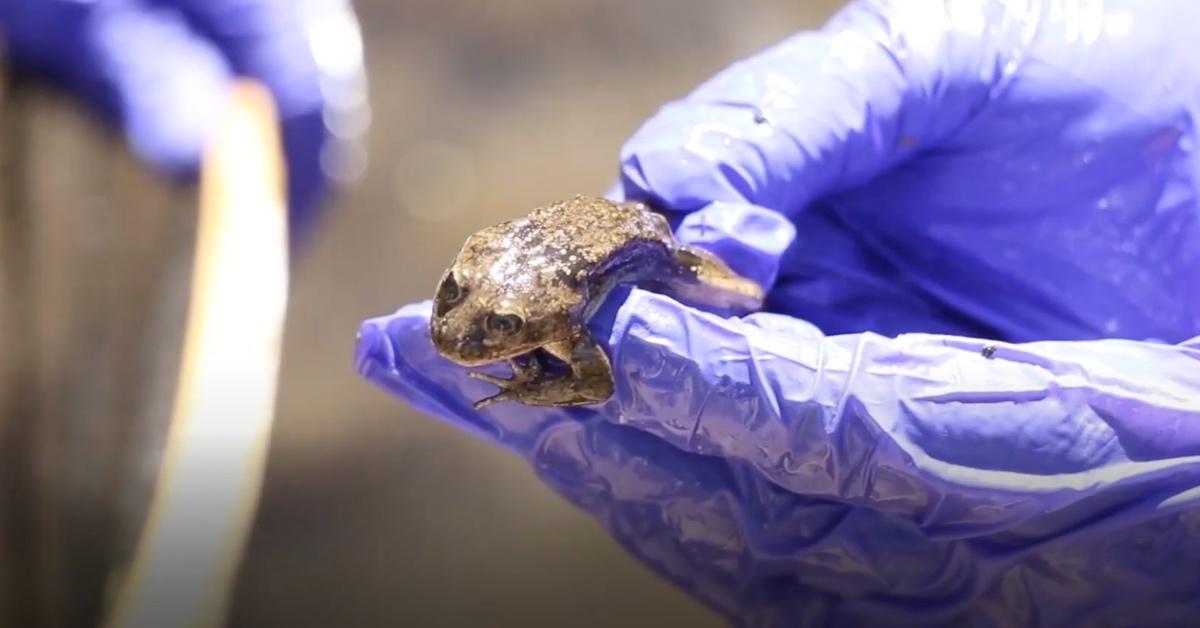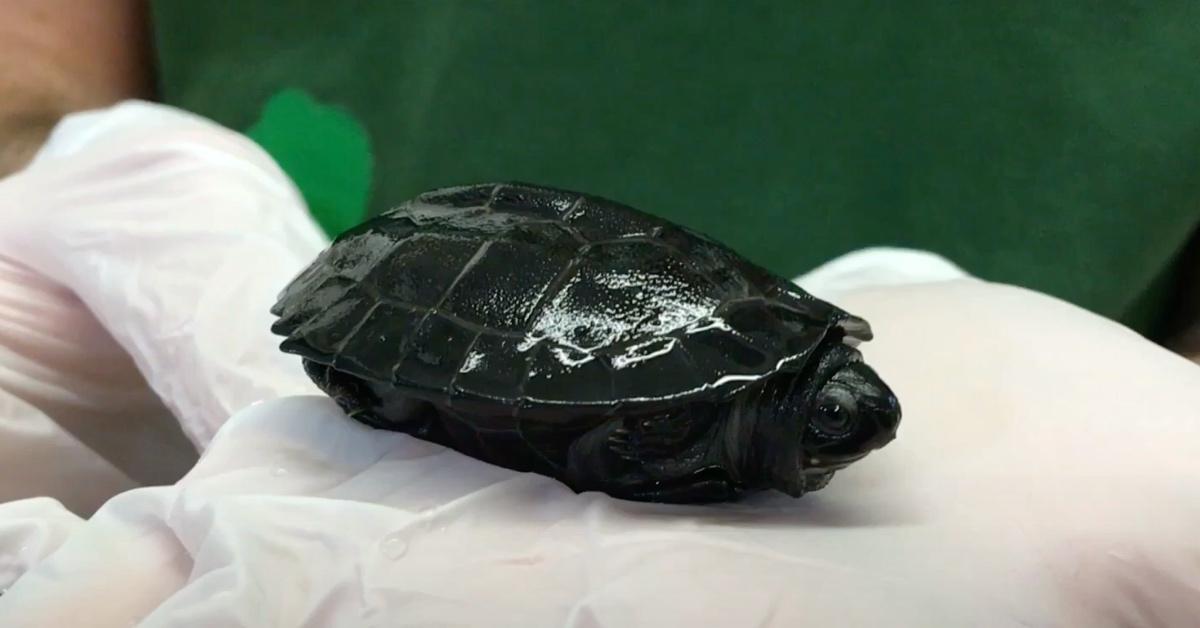The New Species Experts Have Discovered — or Rediscovered — Throughout 2024
We'll continue updating this running list of some of the new and rare species discovered — or rediscovered — throughout 2024.
Updated Nov. 15 2024, 9:16 a.m. ET
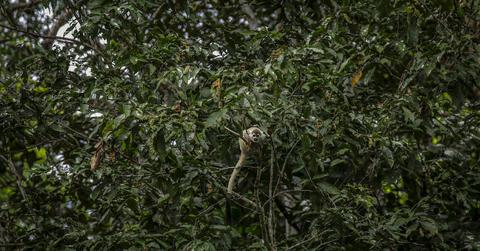
A Squirrel Monkey/Saimiri sciureus is seen at the Amazon forest in Amazonas, Colombia, on April 4, 2023.
There's one thing that pretty much all humans can probably agree on: New species being discovered is much preferable to species going extinct.
But with over 163,000 species on the IUCN Red List of Threatened Species, over 45,000 of which are at risk of extinction (as of August 2024), news of new animal and plant species being discovered can feel few and far between.
Thankfully, conservation efforts can help with that. Not to mention, every year, scientists reportedly discover 18,000 new species — so throughout 2024, we'll be updating this list with some of the most exciting new species that are unearthed. Stay tuned!
Telmatobius dankoi, better known as the Loa water frog, has returned from near extinction.
In October 2024, a dozen endangered Loa water frogs were transported from the Parquemet Zoo in Santiago back to their home of Calama, Chile, reports Reuters. The frogs were initially taken to the zoo in 2019 after their populations were decimated by destruction of habitat and water extraction from mining.
Thankfully, once in Santiago, herpetologist Osvaldo Cabeza led a successful reproduction campaign that led to over 500 new Loa water frogs in the world! Now, Cabeza is intent to put them back in their environment where they belong.
Cabeza also highlighted the importance of restoring the habitat as well — "If we do not recover this habitat, it is very likely that the frogs will become extinct in the wild and will only exist in laboratories," he urged.
Seven new frog species were discovered in Madagascar — and given names inspired by 'Star Trek.'
In October 2024, researchers shared that in the mountains of Madagascar, they discovered seven new frog species under the Boophis genus, as reported by Phys.org. Most interestingly, these frogs do not croak; instead, they produce high whistling sounds, which the researchers think sounds like Star Trek sound effects.
"That's why we named the frogs after Kirk, Picard, Sisko, Janeway, Archer, Burnham, and Pike — seven of the most iconic captains from the sci-fi series," stated lead author Professor Miguel Vences, per Phys.org.
The research detailing this discovery was published in the journal Vertebrate Zoology.
Researchers discovered a new species of "grumpy" fish, or grumpy dwarfgoby, in the Red Sea.
A team of researchers at the King Abdullah University of Science and Technology and the University of Washington published a research paper on Sept. 12, 2024, announcing the discovery of a new "grumpy" fish species. The discovery was published in the journal Zookeys.
The tiny, bright red fish has a distinctly pouty demeanor from which they get their name.
The Canadian lynx, or Lynx canadensis, was spotted in Vermont for the first time since 2018.
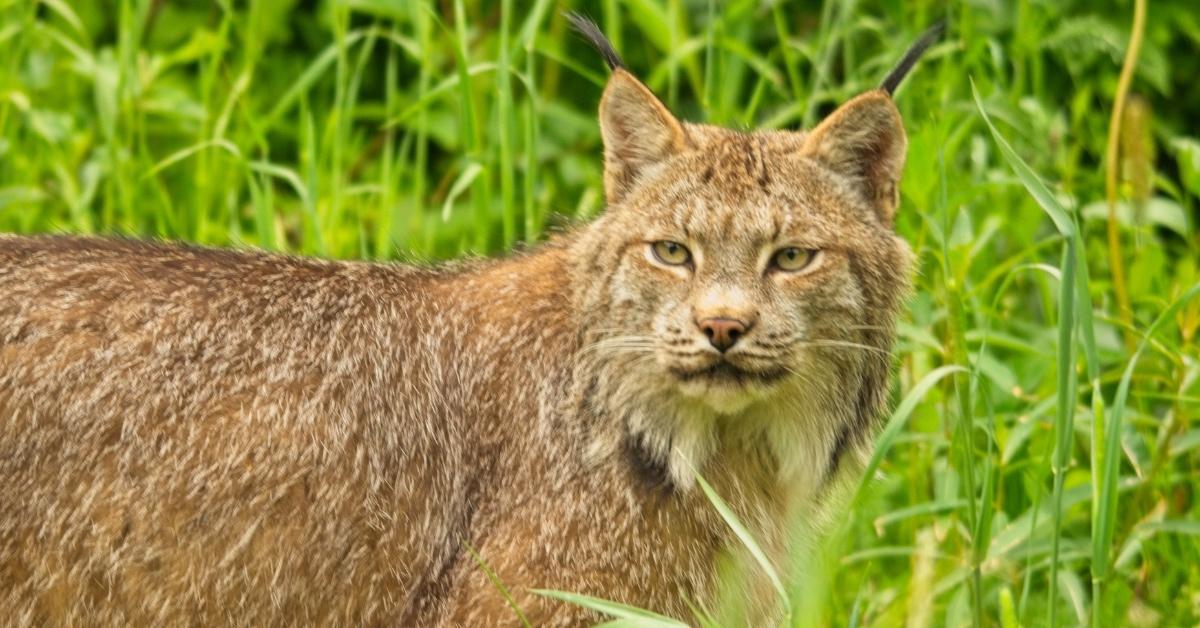
According to the Associated Press (AP), a Canadian lynx was spotted for the first time in years in Vermont on Aug. 17, 2024. The species is endangered in the state.
Brehan Furfey, wildlife biologist and furbearer project leader with the Vermont Fish and Wildlife Department, explained, "This newest sighting is especially exciting because the cat was spotted in Rutland County, far south of most confirmed lynx reports in Vermont."
Oceanographers discovered 20 possible new underwater species off the coast of South America.
In August 2024, Schmidt Ocean Institute unveiled a discovery of around 20 potential new species, all discovered off the coast of the Nazca Ridge, along western South America near Chile. The institute has yet to share all the details on these potential new species.
"On this expedition, we think we found another 20 new species," Schmidt Ocean Institute's executive director Jyotika Virmani told Newsweek, "as well as about 80 species that have never been seen in this part of the world before."
Some of these rare 80 species the oceanographers observed include: a Casper octopus (as seen above), marking the first time the species was found in the Southern Pacific; an exceptionally rare Promachoteuthis squid; and two Bathyphasa siphonophores, aka flying spaghetti monsters.
Conservationists are revitalizing Siebenrockiella crassicollis, or black marsh turtle, populations.
Reuters reported on July 24, 2024, that in late May the first Black Marsh Turtle hatched in captivity at the Angkor Centre for Conservation of Biodiversity (ACCB). The teeny reptile will eventually be released into the wild by conservationists hoping to revitalize the endangered species.
Black Marsh Turtles are freshwater reptiles currently listed as "endangered" with numbers decreasing by the International Union for Conservation of Nature (IUCN).
To no one's surprise, the reason these turtles are endangered is primarily due to poaching and habitat loss. As the IUCN summarizes, "The main threats to the species are exploitation for national and international consumption, trade and habitat loss, mostly from agriculture."
Thankfully, conservationists at the ACCB are trying to change this, and already house six adult Black Marsh Turtles.
Scientists discovered extremely rare Crocodylus siamensis, or Siamese crocodile eggs.
On July 18, 2024, conservationists in Cambodia announced that in May, locals had discovered 106 eggs from the rare Siamese crocodile in Cardamom National Park. Since then, 60 of the eggs have hatched, according to a joint statement from the Cambodian ministries of agriculture and environment and conservation group Fauna & Flora, per the Associated Press (AP).
Previously, there were only 400 Siamese crocodiles left in the world, with most of them residing in Cambodia, reports BBC News. The species is listed as "critically endangered" by the International Union for the Conservation of Nature.
"This discovery indicates that the area is a key habitat for wild crocodiles, providing hope for the species recovery," the statement read.
The Mississippi gopher frog, or Lithobates sevosus, is recovering from the edge of extinction.
In June 2024, Courthouse News Service reported that conservation efforts to revitalize the Mississippi gopher frog were underway. The frog, sometimes known as the dusky gopher frog, has been on the verge of extinction for decades, with only 50 frogs in the wild in 2005.
In late May and early June, American Conservation Experience interns released more than 500 adult frogs into a Mississippi habitat after raising 757 tadpoles at the Mississippi Sandhill Crane National Wildlife Refuge, per The Cooldown.
Biologist Joseph Pechmann of Western Case University told Courthouse News Service that by raising the frogs in a controlled environment first, "we can get survival rates above 80 percent. So, the frog is doing much better now than it was in the mid-2000s."
A new species of dinosaur known as Lokiceratops rangiformis for its horns was discovered.
According to NBC News, commercial fossil hunter Mark Eatma discovered the dinosaur bones on a ranch in Montana in 2019. The skeleton was then purchased by Denmark's Museum of Evolution in 2021, where it is currently on display.
The dinosaur was so named Lokiceratops rangiformis for its impressive horns, resembling the Norse god Loki.
A study dedicated to the Lokiceratops was published in the journal Peer J on June 20, 2024. However, there is currently some debate amongst scientists as to whether the dinosaur is an entirely new species or a variation on an old species.
The Iberian lynx, better known as Lynx pardinus, is back from the brink of extinction.
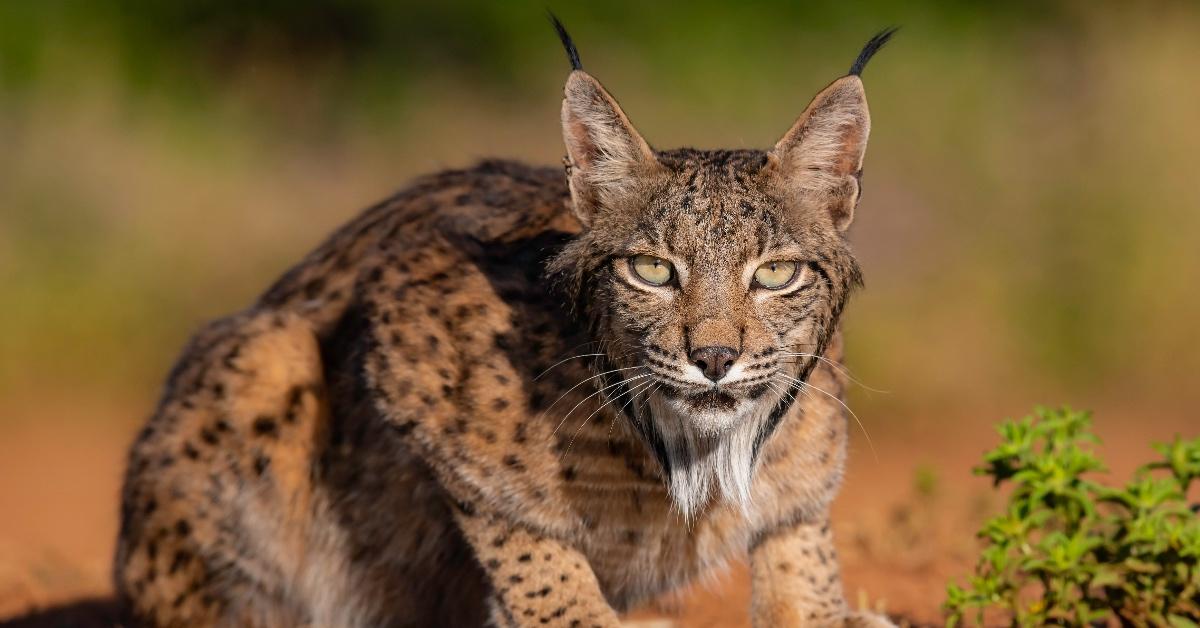
While not an undiscovered species, the Iberian lynx has been an endangered species for two decades, with population numbers estimated at just 62 mature cats in 2001, per the Associated Press.
The Iberian lynx, which is native to parts of Spain and Portugal, declined heavily in population thanks to food scarcity, habitat loss, and illegal hunting, amongst other issues, according to the World Wildlife Fund.
Thankfully, in a 2024 report by the International Union for Conservation of Nature (IUCN) in June 2024 revealed that the lynx's status has improved from "endangered" to "vulnerable" thanks to the tireless work of conservationists. Conservationists' strategy included reintroducing populations to parts of Spain and Portugal and focusing on increasing European rabbit populations. The rabbits are a staple of lynx diets.
The IUCN report reveals that in 2022, there were 648 mature cats, with total population numbers soaring to over 2,000.
The northern green anaconda, aka Eunectes akiyama, was discovered.
Also the "largest anaconda ever recorded," scientists discovered Eunectes akiyama, or the northern green anaconda, in January 2024, while filming National Geographic series Pole to Pole with Will Smith for Disney Plus.
According to Reuters, it was thought that there was only one species of green anaconda, the Eunectes murinus. The reveal of a new species was published in the scientific journal MDPI Diversity in February.
Researcher Bryan G. Fry told Reuters, "What we were there to do was use the anacondas as an indicator species for what kind of damage is being done by the oil spills that are plaguing the Yasuni in Ecuador, because the oil extraction is absolutely out of control." The two species split from each other nearly 10 million years ago, but their genetic makeup is nearly identical.
Rhynchocalamus hejazicus, a small and secretive snake, was found in Saudi Arabia.
Referred to by some as a "snake in a tiny ski mask," the Rhynchocalamus hejazicus is a small snake with a red coloring and a black collar found in the Hejaz region of Saudi Arabia. The snake was discovered by researchers from the Biodiversity and Genetic Resources Research Center in Portugal and Charles University in the Czech Republic, per Newsweek, and their research was published in the journal Zoosystematics and Evolution.
Previously, snakes of the genus Rhynchocalamus were surprisingly divided between the Levant and the coasts of Yemen and Oman, but the new species is found in the middle — leading scientists to call them "the missing piece(s) of the puzzle." Scientists are optimistic they might find more undiscovered species of snakes in the region.
The Coapilla arboreal alligator lizard, aka Abronia cunemica, is a new lizard species.
In early January 2024, researchers published a study in the journal PLOS One detailing their discovery of a new lizard species. The species was first observed in photos in Chiapas, Mexico's Northern Highlands in 2014; and then between 2015 and 2022, the researchers took five trips to the site to collect evidence.
Their expeditions were worth it, as they can now officially call Abronia cunemica, aka the Coapilla arboreal alligator lizard, a species. As noted by The Miami Herald, the species lives up high in trees, has brown-and-yellow scales, and can grow up to more than 9 inches in length.
A new jaguar was spotted in the U.S.
In early January 2024, it was announced that a new jaguar was spotted in Arizona in December 2023. In the last 30 years, this marks only the eighth jaguar recorded in the Southwestern U.S.
“I’m certain this is a new jaguar, previously unknown to the United States,” Russ McSpadden of the Center for Biological Diversity said, as per AP News. Experts were able to determine this by the jaguar's unique rosette pattern.
“After being nearly wiped out, these majestic felines continue to reestablish previously occupied territory despite border wall construction, new mines, and other threats to their habitat,” McSpadden added.
According to the the Center for Biological Diversity, the U.S. Fish and Wildlife Service classified jaguars as endangered in 1972; then, in 1980, they were removed from the list. As populations waned, come 1997, jaguars were added back to the endangered list. So while this sighting does not mark a new species, it's just as remarkable, as it's a sign of the jaguar population rebounding.
Booralana nickorum, an underwater isopod that's cousins with the roly poly, was discovered in the Bahamas.
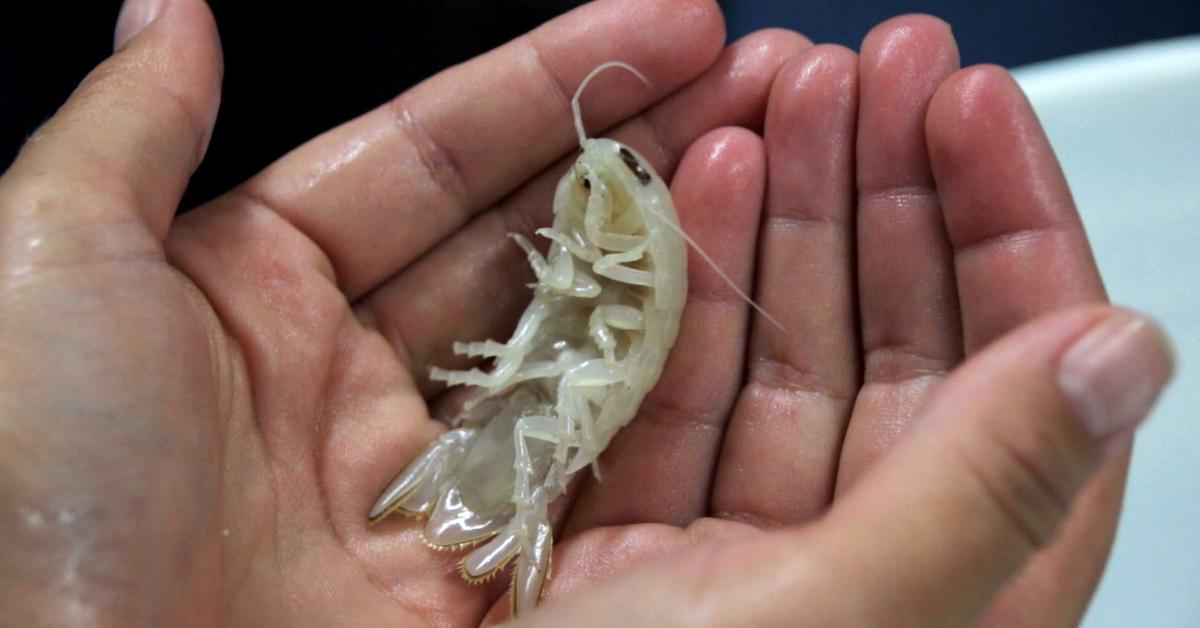
Researchers with the nonprofit OceanX and the Cape Eleuthera Island School went on a mission in the Bahamas back in 2019. There, in the Exuma Sound, they discovered new isopod species — but didn't share the news until January 2024, when their research was published in the journal Zootaxa.
This crustacean, called Booralana nickorum, is estimated to be 300 million years old. The researchers are hopeful that studying these creatures — which are cousins with the beloved rollie pollies — will reveal vital information about the ecosystem of the Great Bahama Banks.
This article, originally published on Jan. 8, 2024, has been updated.
